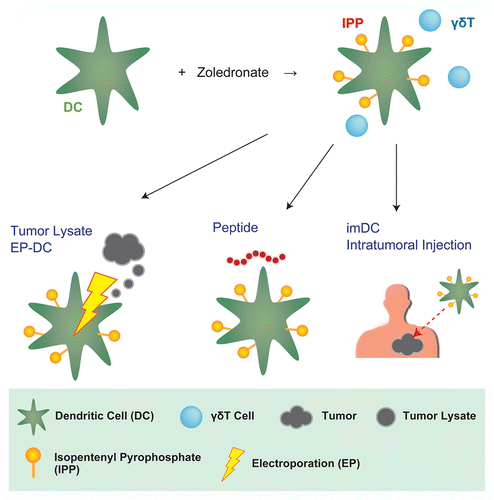Figures & data
Figure 1. Zoledronate-pulsed dendritic cell-based cancer vaccines. Zoledronate is an amino-bisphosphonate that induces the accumulation of isopentenyl pyrophosphate (IPP), a ligand of the Vγ9 γδ T-cell receptor (TCR), in a variety of cells. Vγ9 γδ T cells activated by zoledronate can link the innate and adaptive branch of the immune system via dendritic cells (DCs), hence supporting the activation and proliferation of tumor-associated antigen (TAA)-specific CD8+ cytotoxic T lymphocytes (CTLs). DCs can be effectively loaded with purified TAAs, cancer cell lysates or mRNA preparations by a closed-flow electroporation (EP) system. Alternatively, loading can be performed by culturing DCs in the presence of 9–15-mer TAA-derived peptides. When it is difficult to obtain adequate amounts of TAAs for loading DC ex vivo, tumor-specific immune responses might be induced in vivo, upon the injection of immature DCs (imDCs) into neoplastic lesions.
